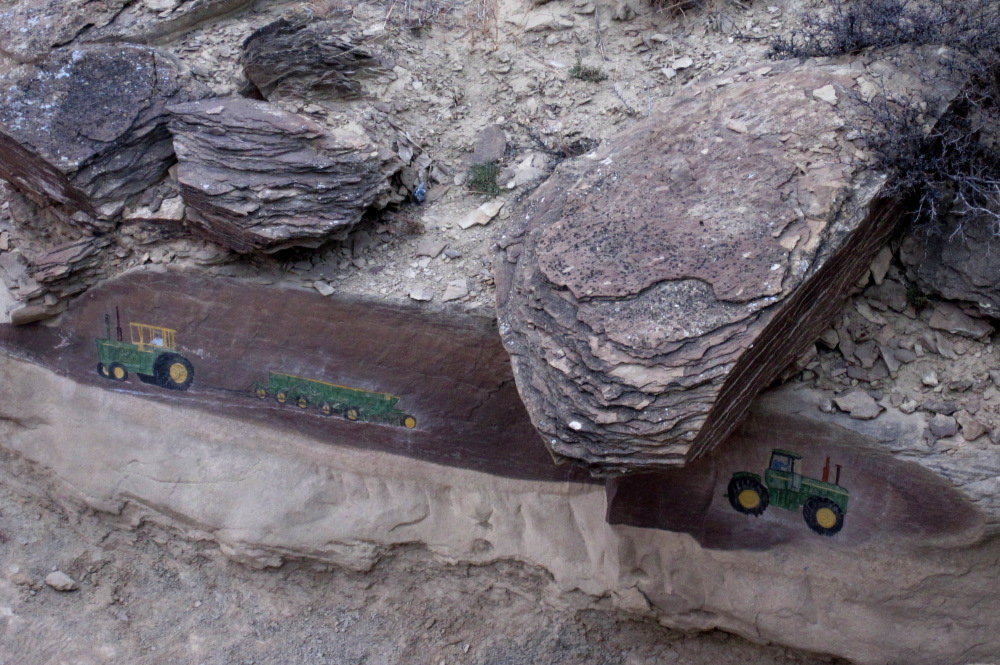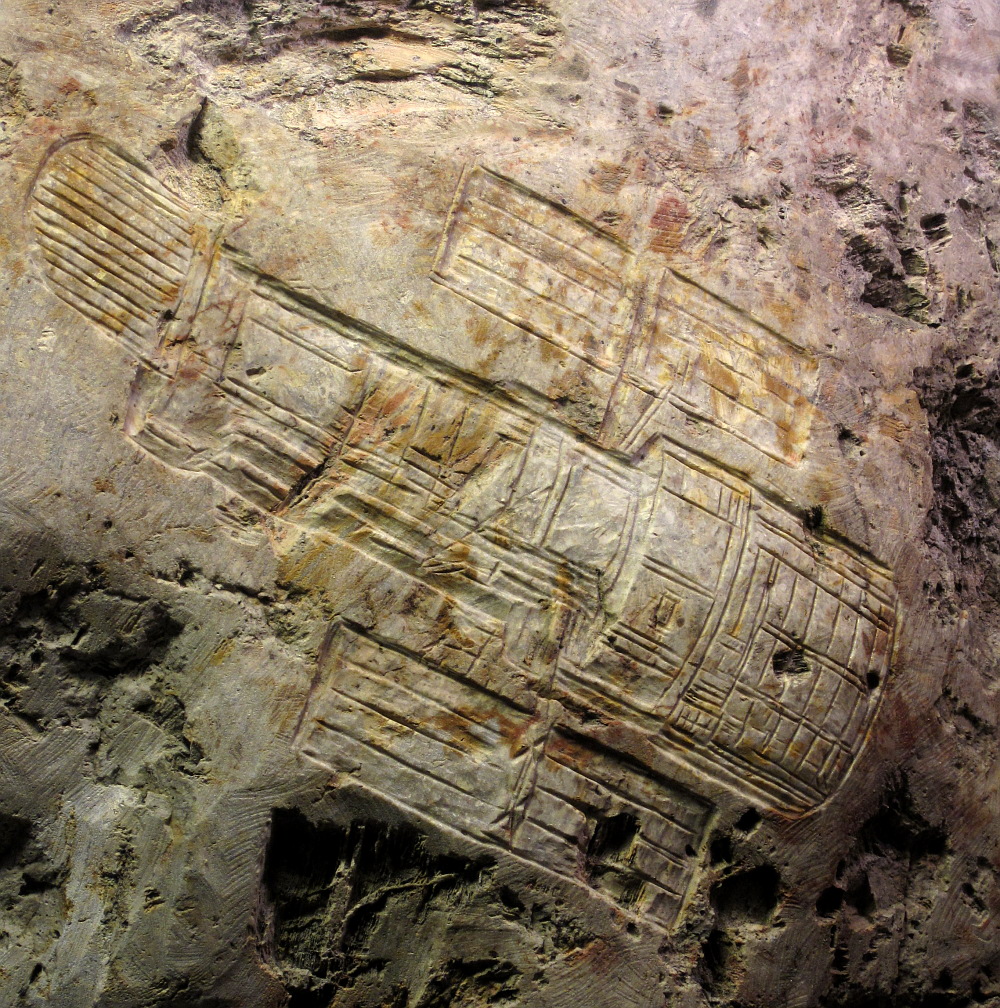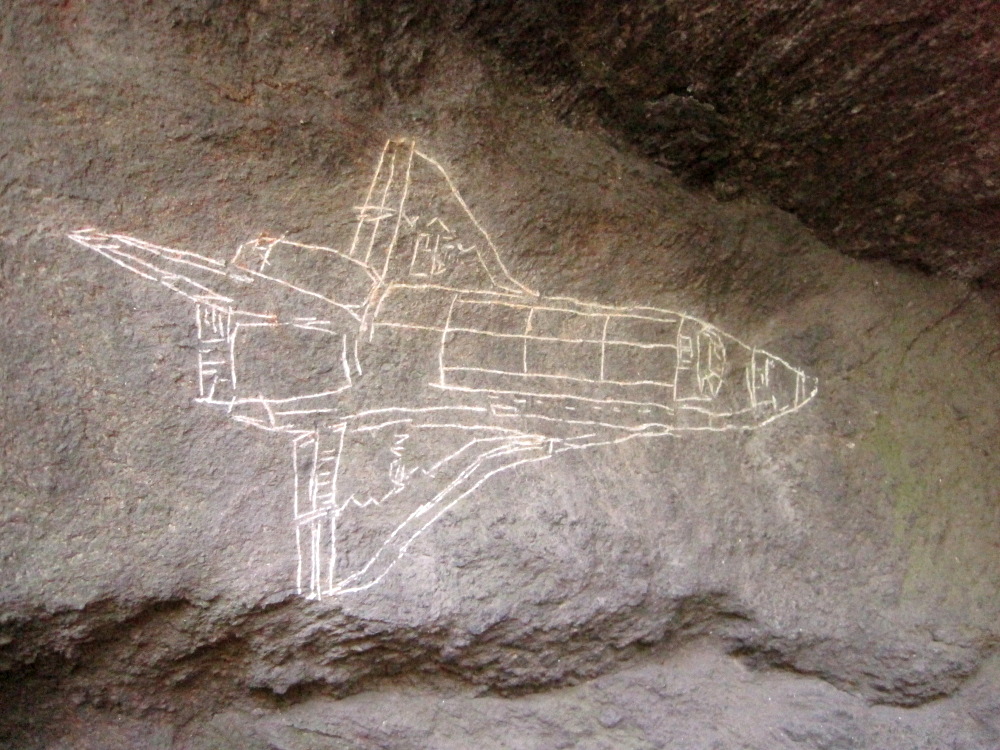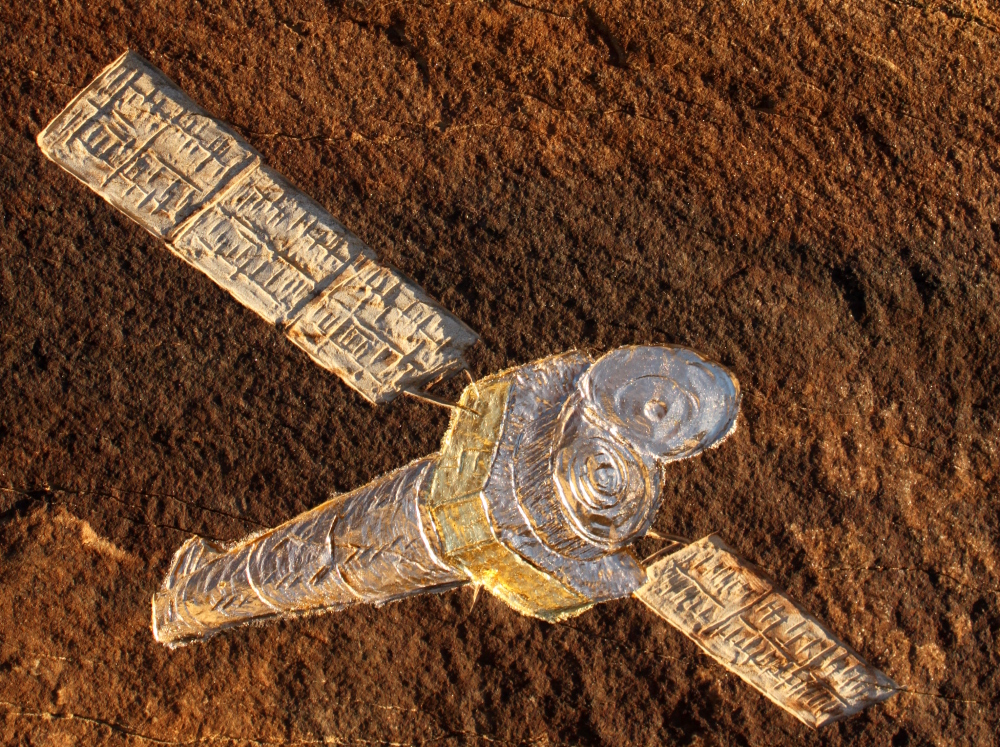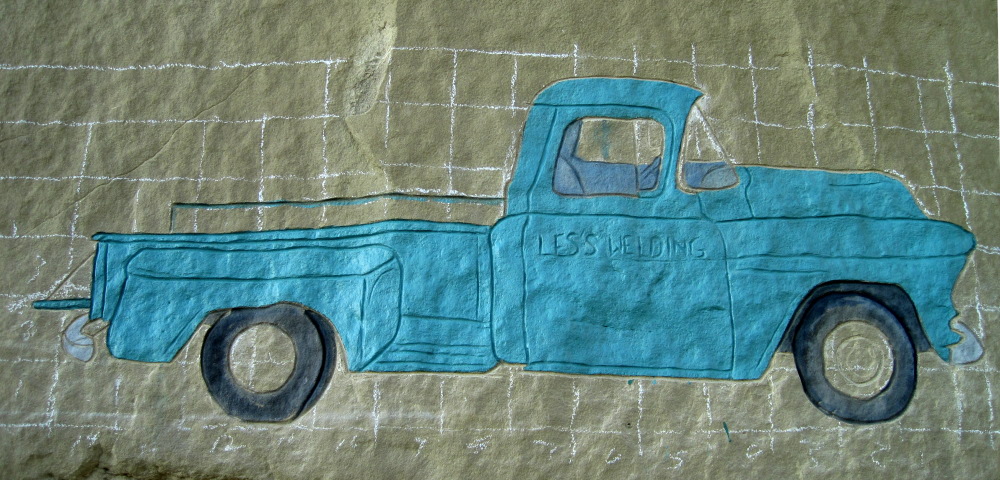In addition to working in the oil fields, my host in Montana farmed. He farmed both summer and winter wheat in strips below the hills where the new petroglyph is carved. His father was the original European settler on that land, and he farmed wheat as well. Now my host’s sons carry on the tradition where there father and grandfather began. Here are some carvings of the men at their work.
Here is my host on the 1970’s John Deere four wheel drive tractor:
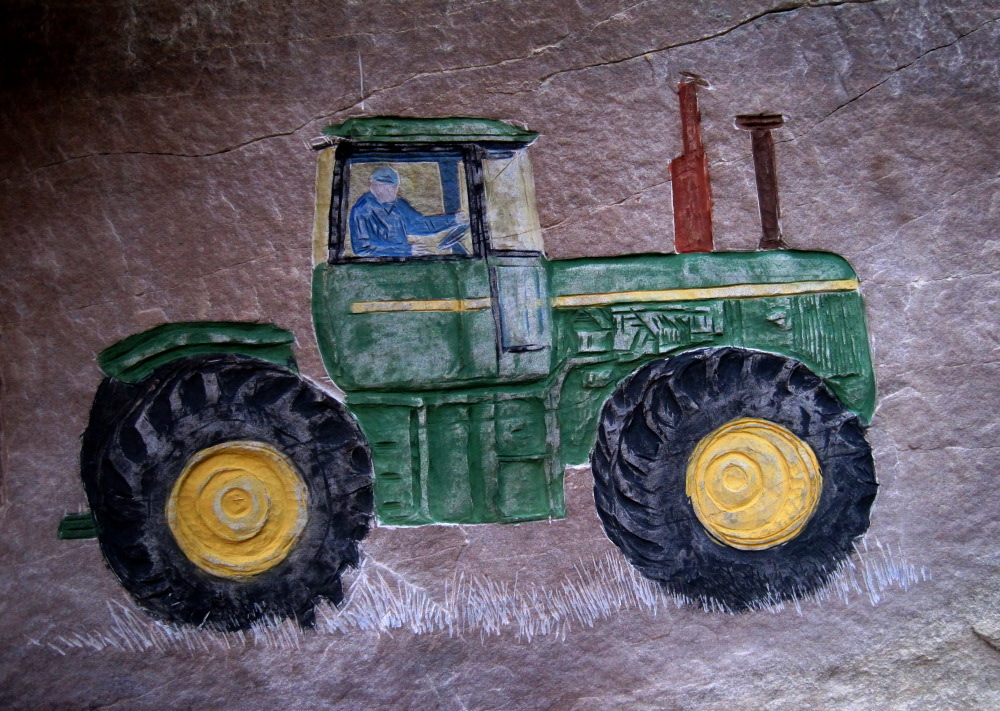
Below is my host’s son driving the two wheel tractor pulling his uncle’s drills. The drill is the the mechanism that puts the seeds into the ground. (In ND I carved an air seeder, or “till-less drill” which uses air pressure to force the seeds into the ground thereby not breaking the soil as much)
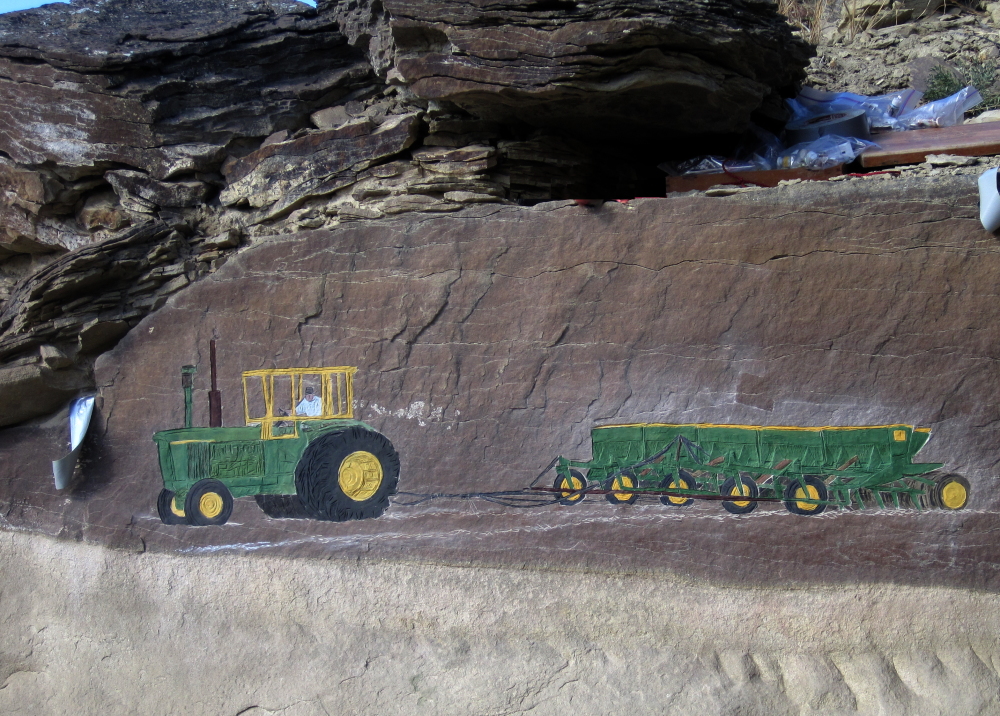
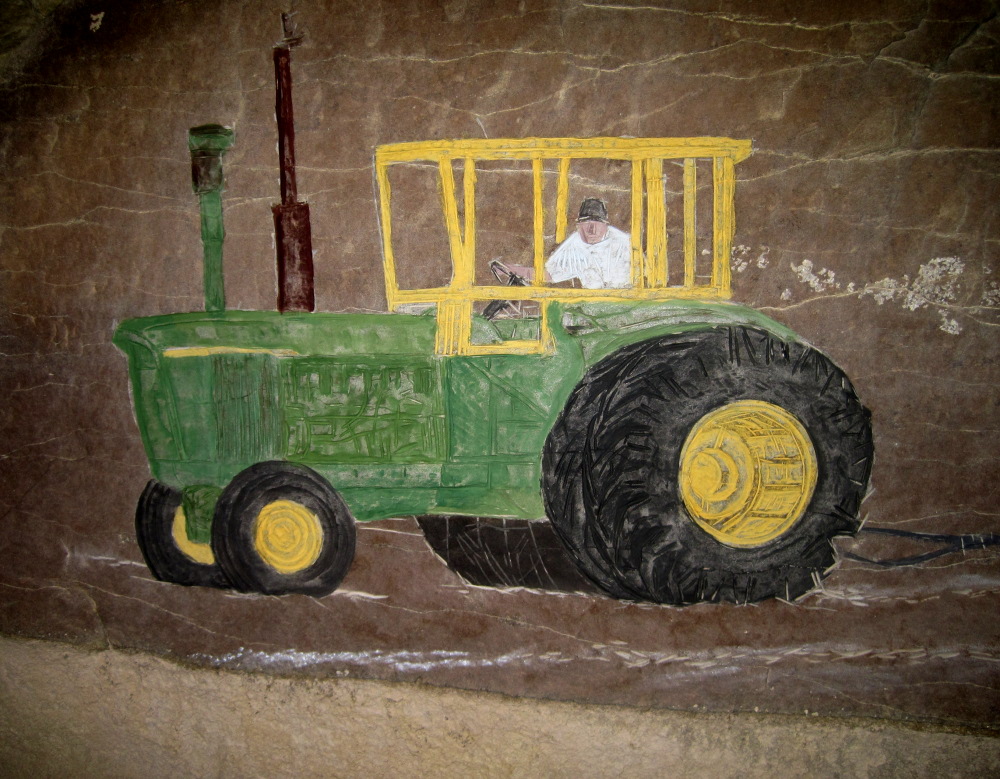
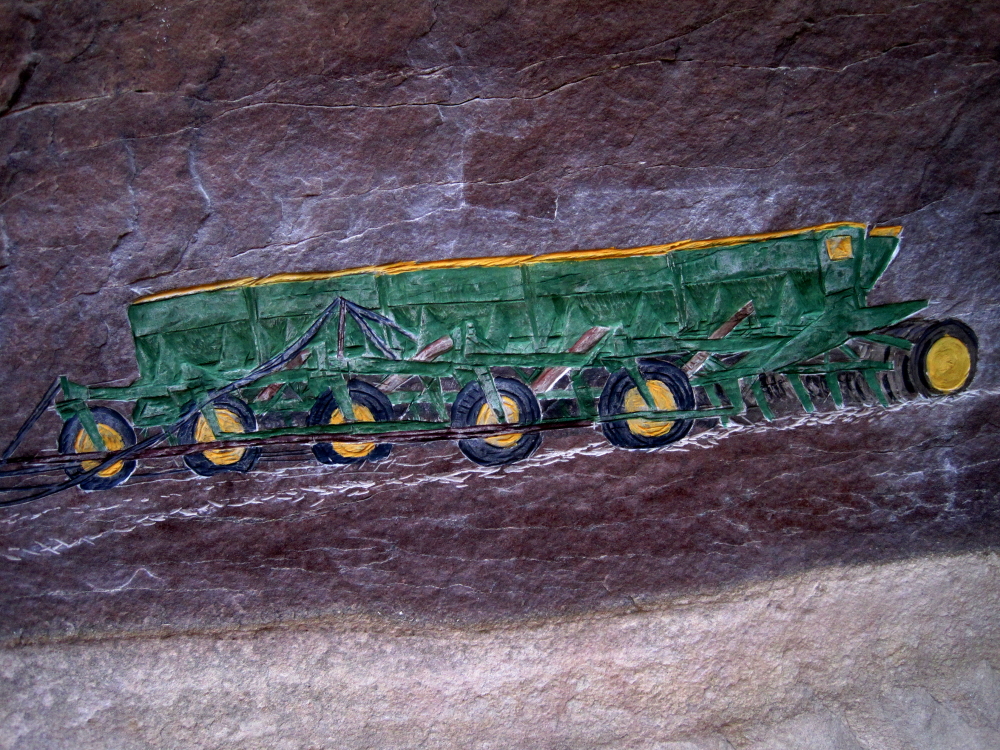
Below is the view of the two tractors from the top of the rims.
